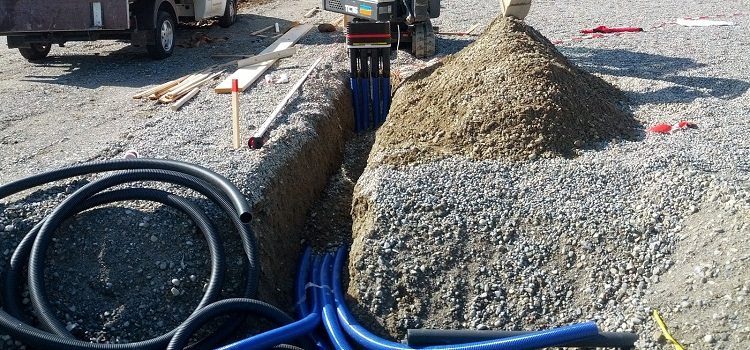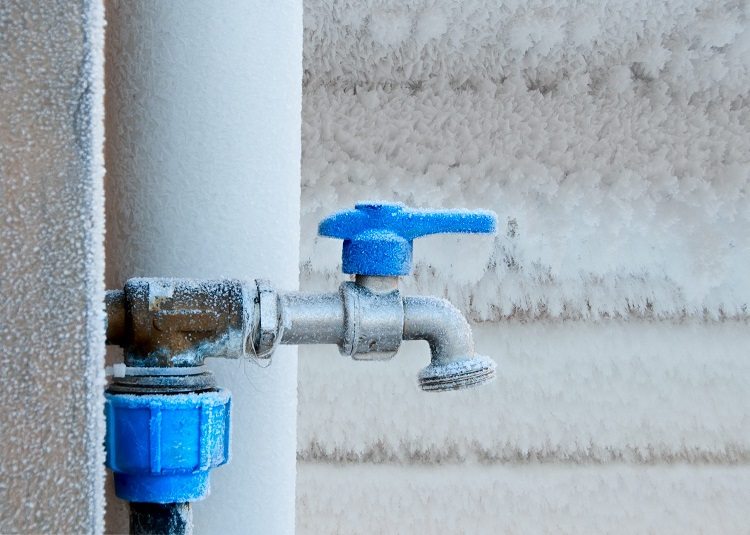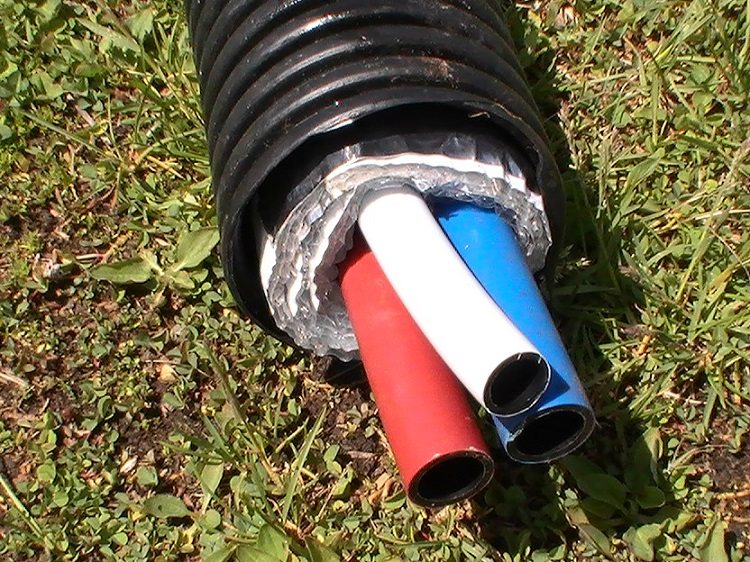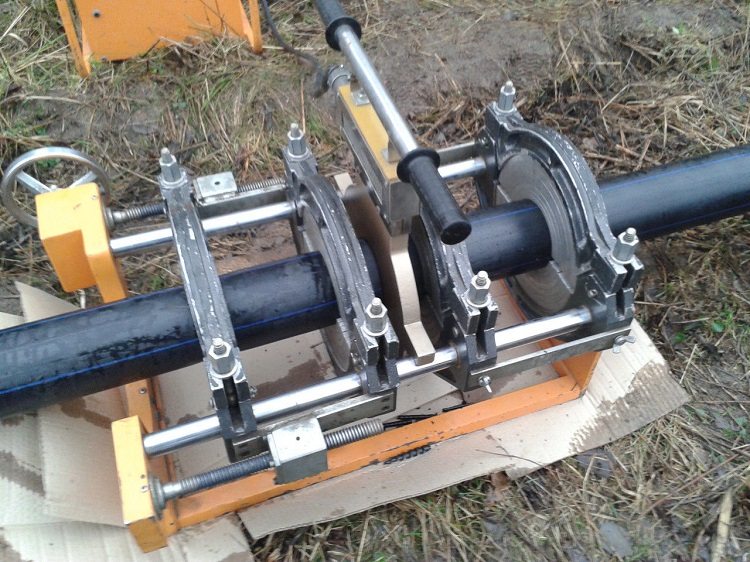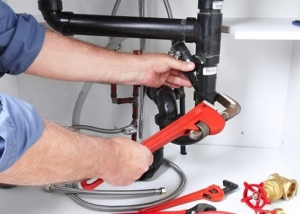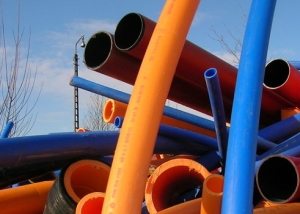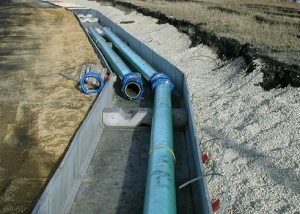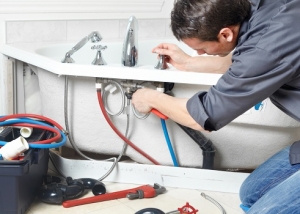During installation underground water on a private house, often the question arises of how deep the communications should be. Do not think that the deeper the trench is dug, the better the pipeline will function. To ensure trouble-free operation of water pipes, it is necessary to carry out repairs in accordance with all technological standards.
Content
How to calculate the depth of the laying of water pipes
Depth of laying water pipes is influenced by many factors. The fundamental parameter determining the depth of the pipeline will be the level of soil freezing in the coldest time of the year. This means that even with the most severe frosts, the temperature of the liquid in the pipe should not fall below 0 degrees. Otherwise, the water will freeze, and will naturally thaw only by spring. And it will not be possible to contribute to the melting of frozen water in a plumbing system located in the thickness of the earth. In the hot season, the pipeline should not overheat so that its operation is not disturbed.
So, we can distinguish several of the following parameters that affect the determination of the depth of the water pipes:
- The temperature regime in the respective region in the winter and summer.
- Characterization of the structure of the soil (loose, hard, clay, rocky).
- The presence of vegetation cover on the ground.
- The temperature of the water circulating through the water supply.
- The amount of sunlight (hours per day, days in a year).
- Remoteness and the presence of groundwater.
- The amount of precipitation in the region.
Important! To ensure efficient and proper operation of the entire water supply, each of the factors presented is taken into account.
The parameters necessary for repair work can be determined using modern technologies and methods. This makes it possible to perform the necessary calculations and get the exact result up to tenths of a meter.
Normative indicators of the depth of instillation of water pipes
Professional calculations and measurements become optional if there is a base of normative indicators relevant for the area where repairs will be carried out. All standards are provided by special authorities. The special value of the regulatory framework lies in the fact that all indicators were obtained in the course of pilot studies and repeatedly tested in practice. The rules state that the depth of the laying of water pipes can be determined by adding at least 0.5 meters to the actual depth of freezing of the soil.
Having the initial information (as a rule, this is just the location of the region), you can use online services to calculate the depth of the laying of water pipes. Special tables are also provided by SNiP.
Helpful advice! Difficulties in digging trenches can arise when the soil structure does not allow the optimum depth to be reached.Under such circumstances, the best solution would be to dig a trench to the maximum possible depth, but at the same time, some insulation must be applied to protect the pipes from low temperatures.
For example, there are special requirements for laying water systems in the soil in the northern territories. The freezing depth in this case can reach 3-4 meters from the soil surface. Accordingly, a trench of such depth is quite difficult to dig without the use of special equipment.
In areas located in the middle lane, depth indicators may vary depending on the variety of soil composition:
- soft, loose soil, sand prevails in the composition of the soil - 1.6 m;
- average soil friability, gravel is present in the composition - 1.7 m;
- clayey, viscous soils - 1.3 m;
- coarse-grained, stony, solid soil - 1.9 m.
For the southern regions, the depth to which you can dig pipes is taken less, starting from 1 m. Lower rates are not taken into account due to possible mechanical damage to the pipeline when working on the site. The thickness of the soil protects the water supply from the effects of external loads (pedestrian, transport load), which can damage the integrity of the system.
Depth of plastic pipes
If laying the pipeline deeper than the level of freezing of the soil is required, it is taken into account which pipe to use for the pipeline and the properties of its material. The ultimate degree of pipe strength that can withstand soil pressure must be considered. Pipes made of metal (steel, cast iron, copper) withstand maximum loads, but due to the high cost and complexity of installation, they are rarely used. Plastic pipes theoretically, they can withstand loads of up to 8 m, but such a laying depth is not the best way to affect the duration of their operational life.
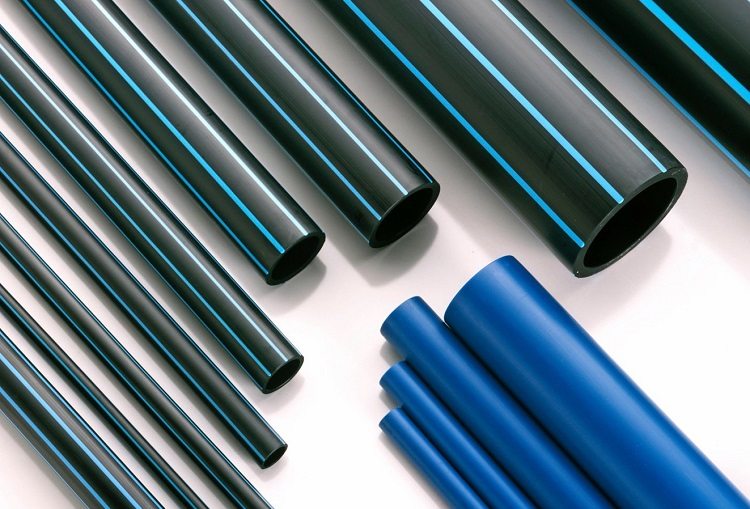
For placement at great depths, it is better to use HDPE pipes, they are able to withstand strong soil pressure
The depth of the water plastic pipes is determined depending on the marking of the product. Marking indicates the thickness of the walls, and hence the structural strength. Orange polypropylene (PP) pipelines used for laying sewage can be buried to a depth of 3 m. Gray polypropylene pipes have a lower density and are not able to withstand such pressure. Pipes made of low pressure polyethylene (HDPE) are very flexible, ductile, they are able to withstand pressure up to 10 atmospheres. They can be buried at any required depth without danger to the integrity of the structure. We are talking about PN10 PND pipes with a diameter of at least 25 mm), lower-quality PN6 pipes for underground water supply are not suitable.
Polyethylene pipes can be laid not only for drinking water, but also for pressure discharge. If there is the possibility of excessively high loads on the soil and, accordingly, on the pipe, they can be laid in steel or concrete cases.
Practical tips for laying water pipes in the ground
Having decided on the depth to which a water pipe should be buried, it is also necessary to take into account some features of the installation of underground pipelines.
It is very important to know what water pipe apply in one or another highway. If you plan to lay a water supply to supply the site with hot water, it is better to use metal-plastic or reinforced pipes. Despite the fact that polypropylene structures are sometimes used even when installing heating systems, in case of a possible accident on an underground track, repairs will be very difficult and costly. Low-pressure polyethylene softens from too high temperatures, so installing it as a hot water pipe is a very dangerous undertaking.
Helpful advice! Thermal insulation is required not only for laying cold, but also for hot water supply. Firstly, the water will not lose temperature along the way from the source. Secondly, with high-quality thermal insulation there is a guarantee against pipe failure due to temperature differences.
For the installation of underground structures, permanent joining methods are more preferable. It is better to install a pipe from PP and PND by heating welding. This provides an almost monolithic design, and detachable connections do not make sense if they are underground.
It is also worth mentioning the features of installing a water supply system in areas with increased groundwater activity. On the territory of the passage of water supply routes, which is often flooded with groundwater, the layer of reinforcing backfill can not be less than 1 m. In addition to this method, an anchor fastening is also used to prevent the emergence of pipes under the influence of groundwater. Anchor fasteners can be located at a distance of not more than 4 m from each other with a width of fasteners of 25 mm.
In the process of connecting the water supply system to the main highway, there are also several interesting points. It is important to determine the optimal location for laying the main crane. It should be located in such a way that access to it is always open. If it was decided to leave the crane underground, then special attention should be paid to its insulation.
The tap should be at right angles and as close as possible to the main water supply. This design will provide protection against clogging and contamination in the thickness of the pipe. In this case, foreign particles, always present in the unfiltered water stream, will be easier to move in the stream, and they will not settle on the walls of the pipeline. With a rectangular arrangement of the crane it is also much easier to carry out self-cleaning system. Otherwise, it will be difficult to clean the water pipe from debris with your own hands.
